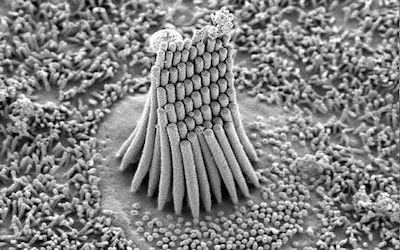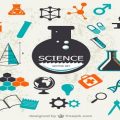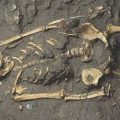PTE考生目前最大的问题之一就是练习题缺乏。除了有限的基本官方书(PLUS,Testbuilder, OG)之外就没有题了。很多英语基础不是很扎实的同学很难找到练习材料。悉尼文波雅思PTE培训学校专门为澳洲,尤其是悉尼、墨尔本的PTE考生准备了适合PTE听力阅读练习的科学60秒。各位PTE同学可以练习PTE听力中的summarise spoken text和PTE口语中的retell lecture,PTE听力口语-科学60秒-Frosty Moss练习记笔记技巧和复述。废话少说,下面开始:
听力内容:
60秒科学节目(SSS)是科学美国人网站的一套广播栏目,英文名称:Scientific American – 60 Second Science,节目内容以科学报道为主,节目仅一分钟的时间,主要对当今的科学技术新发展作以简明、通俗的介绍,对于科学的发展如何影响人们的生活环境、健康状况及科学技术,提供了大量简明易懂的阐释。
This is Scientific American — 60-Second Science. I’m Christopher Intagliata.
Long ago, before Band–Aids, or even medicine of any kind, our ancestors evolved to heal cuts themselves. If you got sliced open, the body blocked it up, to prevent blood loss, water loss, infection. But as we gained that power—we sacrificed something else.
“So we’ve evolved to heal very quickly, or as quickly as possible, at the expense of regenerating skin the way it used to be.” George Cotsarelis, a skin biologist at the University of Pennsylvania who studies that newly healed skin—aka scars. “And the feature of scars is that they don’t have hair follicles, sweat glands or fat.”
In that observation lies a clue, which Cotsarelis and his team investigated in mice. They found that, when mice were injured, hair follicles sometimes regenerated at the wound site. And where hair cells appeared, fat cells did, too—the fat that sits under normal skin, as a cushion. “The bottom line is that the follicle has these almost magical powers where it’s really normalizing the skin architecture.” Meaning hair cells are good for reducing scarring.
In their latest work, in the journal Science, they isolated a growth factor called BMP from the hair follicles. It’s a signal the follicles send to neighboring cells. They then exposed human scar cells to BMP, in a dish. They found that the growth factor did indeed help to reprogram the scar cells to fat cells, nudging them down a different developmental path.
Cotsarelis says a magic scar-free ointment is probably a ways off. “It’s a very complicated process and knowing the timing of when to introduce things, how to introduce them, and the delivery of the compounds is important.” But if we figure that out—we might someday be able to coax our skin to heal itself…without leaving visible evidence behind.
Thanks for listening for Scientific American — 60-Second Science Science. I’m Christopher Intagliata.
墨尔本悉尼文波PTE原创首发
更多精彩请持续关注微信wenbo_tv3。





